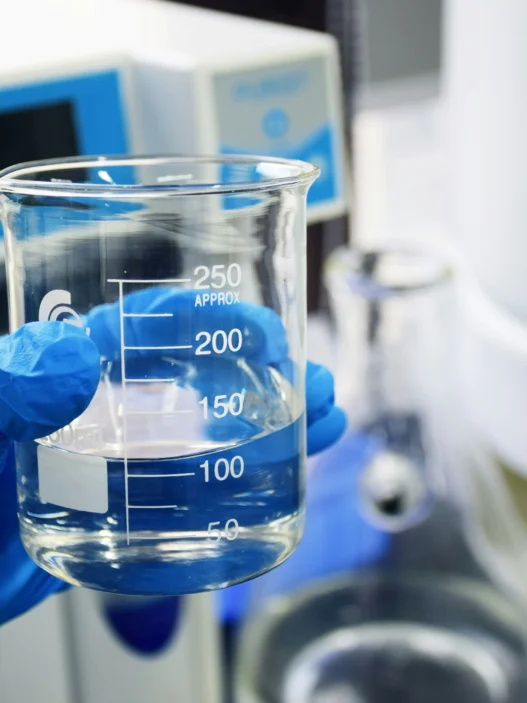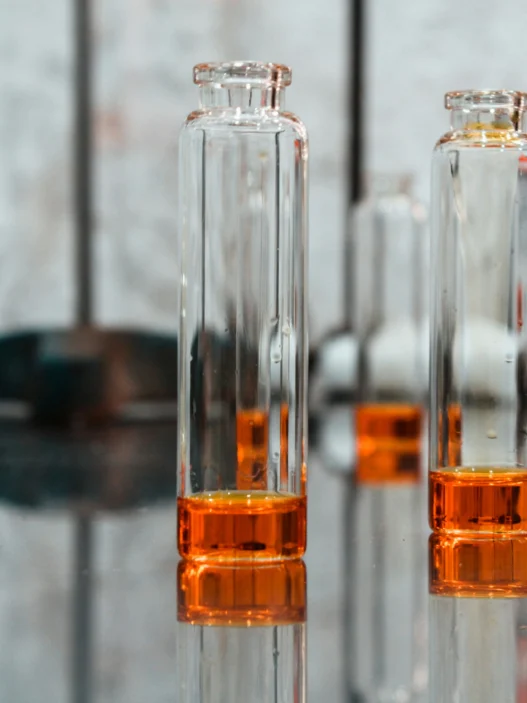Thiirane, a three-membered heterocyclic compound containing two carbon atoms and one sulfur atom, may not be a household name, but its significance lies in its potential applications in various industries. From pharmaceuticals to materials science, thiirane’s unique chemical structure makes it a valuable building block for creating new and innovative products. By understanding and harnessing the properties of thiirane, researchers can develop advancements that have the potential to impact everyday life, whether through the development of new medications or the creation of more efficient materials. As such, the study and utilization of thiirane play a crucial role in advancing scientific knowledge and driving technological innovation in our society.
Table of Contents:
- 💡 Commercial Applications
- ⚗️ Chemical & Physical Properties
- 🏭 Production & Procurement
- ⚠️ Safety Considerations
- 🔬 Potential Research Directions
- 🧪 Related Compounds
💡 Commercial Applications
Thiirane, also known as ethylene sulfide, has various commercial and industrial applications. It is commonly used as a precursor in the synthesis of various organosulfur compounds and sulfur-containing polymers. Additionally, thiirane is used in the production of pesticides and as a solvent in chemical processes.
In the field of drug and medication applications, thiirane has been studied for its potential antiviral and antimicrobial properties. Research has shown that derivatives of thiirane can exhibit activity against certain strains of viruses and bacteria. Furthermore, thiirane has been investigated for its potential use in cancer therapy due to its ability to inhibit the growth of certain tumor cells.
In conclusion, Thiirane’s commercial and industrial applications include its use as a precursor in the synthesis of organosulfur compounds, pesticides, and sulfur-containing polymers. In drug and medication applications, thiirane has been studied for its antiviral, antimicrobial, and potential cancer-fighting properties.
⚗️ Chemical & Physical Properties
Thiirane, also known as ethylene sulfide, is a colorless liquid with a strong odor resembling that of garlic or mustard. Its distinct aroma is often described as pungent and unpleasant.
With a molar mass of approximately 76.15 g/mol and a density of about 1.02 g/cm³, thiirane is relatively light and slightly denser than water. Compared to common household items like water (molar mass of 18.02 g/mol, density of 1 g/cm³) and cooking oil (molar mass of 884 g/mol, density of 0.92 g/cm³), thiirane falls within the lower range of molar mass and density values.
Thiirane has a melting point of around -147.5°C and a boiling point of approximately 39.5°C. These values place it in the range of low melting and boiling points when compared to common household items such as sugar (melting point of 186°C, boiling point above 1600°C) and table salt (melting point of 801°C, boiling point of 1465°C).
Thiirane is sparingly soluble in water and exhibits low viscosity. In comparison to common household items like sugar (high solubility in water) and honey (high viscosity), thiirane displays lower solubility and viscosity characteristics.
🏭 Production & Procurement
Thiirane, a heterocyclic compound containing a three-membered ring with sulfur and carbon atoms, is commonly synthesized through the reaction of a thiol compound with an alkene or an alkyne. This process typically involves the use of catalytic systems such as acids or Lewis acids to promote the cyclization reaction, resulting in the formation of Thiirane.
Thiirane can generally be procured from specialty chemical suppliers or obtained through custom synthesis services. It is often provided as a liquid or solid form, depending on the specific reaction conditions and requirements of the end user. Transportation of Thiirane may involve the use of specialized containers or packaging to ensure safe handling and delivery to the desired destination.
The procurement of Thiirane may also involve the consideration of regulatory requirements and safety precautions due to its potentially hazardous nature. Users are advised to follow proper procedures for storage, handling, and disposal of Thiirane to minimize risks to human health and the environment. Overall, the production and procurement of Thiirane require careful attention to detail and adherence to established protocols to ensure the safe and effective use of this compound.
⚠️ Safety Considerations
Safety considerations for Thiirane include its potential to cause skin irritation, eye irritation, and respiratory irritation. It is important to handle Thiirane with caution, wearing appropriate personal protective equipment such as gloves, goggles, and a lab coat. Additionally, Thiirane should be used in a well-ventilated area to minimize exposure to its vapors.
Thiirane is a cyclic sulfur compound with a three-membered ring structure. It is known for its ability to act as a reactive intermediate in organic synthesis due to its strained ring system. In terms of pharmacology, Thiirane has been studied for its potential as an antitumor agent and as a precursor to other sulfur-containing compounds in pharmaceutical research.
Hazard statements for Thiirane include “Causes skin irritation” and “Causes serious eye irritation.” These statements indicate the potential dangers of exposure to Thiirane and emphasize the importance of proper handling and storage procedures. It is essential to follow all safety protocols when working with Thiirane to minimize the risk of harm.
Precautionary statements for Thiirane include “Wear protective gloves/eye protection/face protection” and “Use only outdoors or in a well-ventilated area.” These statements provide guidance on how to safely handle Thiirane and reduce the risk of exposure. It is important to read and understand all precautionary statements before using Thiirane to ensure the safety of laboratory personnel.
🔬 Potential Research Directions
One potential research direction for Thiirane involves exploring its applications in the field of organic synthesis. Given its unique three-membered ring structure, researchers may investigate its reactivity and ability to participate in various chemical reactions to synthesize complex organic molecules.
Furthermore, the biological and pharmaceutical properties of Thiirane present another avenue for investigation. Studies could focus on its potential as a building block for drug discovery and development, as well as its interactions with biological systems to elucidate potential therapeutic effects.
In addition, the investigation of Thiirane’s physical and chemical properties could open up new possibilities for materials science research. Exploring its potential as a component in polymers, catalysts, or other functional materials could lead to the development of new materials with unique properties and applications.
🧪 Related Compounds
One similar compound to Thiirane based upon molecular structure is Oxirane, also known as ethylene oxide. It consists of a three-membered ring with one oxygen atom and two carbon atoms. Like Thiirane, Oxirane is highly reactive due to ring strain and is commonly used in the production of various chemicals.
Another compound with a similar molecular structure to Thiirane is Aziridine, which contains a three-membered ring with one nitrogen atom and two carbon atoms. Aziridine is a highly reactive compound used in organic synthesis for the formation of various functional groups. Like Thiirane, Aziridine exhibits ring strain due to the small ring size, leading to its reactivity.
Additionally, Episulfide is a compound similar to Thiirane, containing a three-membered ring with one sulfur atom and two carbon atoms. Episulfides are commonly used in organic synthesis as intermediates for the preparation of various sulfur-containing compounds. Similar to Thiirane and other small-ring compounds, Episulfides exhibit high reactivity due to ring strain and are prone to reactions with nucleophiles and electrophiles alike.




